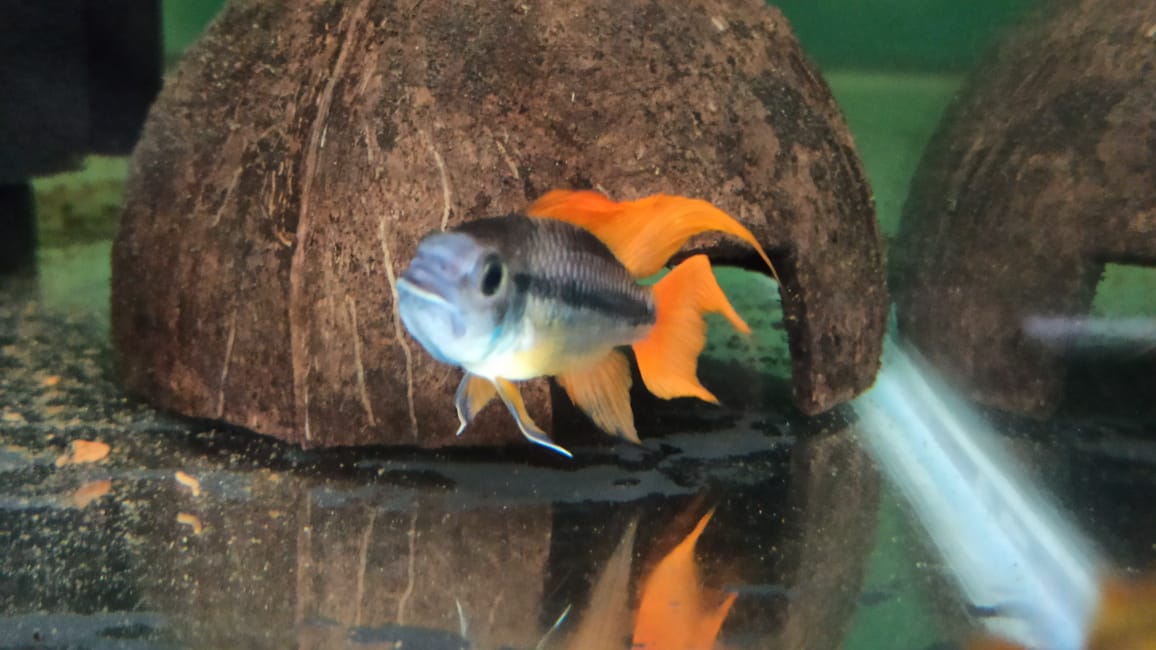Description
Size – 2.5 inch
Note – This particular fish can be shipped to all parts of Kerala, Karnataka, tamil nadu, Andhrapradesh, goa, telengana, Maharashtra, Gujarat, outside these places we are selling at customer’s risk
Whiptail catfish are a group of slender, peaceful fish from the family Loricariidae, known for their distinctive long bodies, pointed snouts, and whip-like tails. They’re native to freshwater rivers and streams in South America, with a variety of species commonly kept in aquariums. They are appreciated for their unique appearance, calm demeanor, and algae-eating habits.
Key Characteristics:
- Appearance: Whiptail catfish have elongated bodies with flat undersides and a thin, flexible tail that resembles a whip. Their colors generally range from brown to gray with patterns that help them blend into the substrate.
- Species Variety: Common aquarium varieties include Rineloricaria and Sturisoma species, which differ slightly in size, shape, and coloration.
- Size: They usually grow between 4 and 8 inches (10-20 cm), though some species can reach up to 12 inches (30 cm).
Behavior and Temperament:
- Peaceful Nature: Whiptail catfish are non-aggressive, bottom-dwellers that are active yet calm, making them suitable for community tanks.
- Algae-Eating: They are excellent algae grazers and will spend much of their time foraging along tank surfaces, driftwood, and plants. However, they may not be as efficient as other algae-eaters like Plecos.
Care Requirements:
- Tank Size: A minimum of 20-30 gallons (75-115 liters) is recommended for most whiptail catfish, with larger tanks needed for larger species.
- Water Conditions: They thrive in soft, slightly acidic to neutral water (pH 6.5-7.5) with temperatures between 72-79°F (22-26°C). They are sensitive to poor water quality, so regular maintenance is essential.
- Diet: Whiptail catfish are primarily herbivores, but they also enjoy a varied diet. They’ll feed on algae in the tank but should be supplemented with sinking algae wafers, blanched vegetables, and occasional protein foods like bloodworms or daphnia.
- Substrate and Decor: A soft substrate (sand or smooth gravel) is ideal to prevent injuries to their delicate undersides. They enjoy having driftwood, rocks, and caves as hiding spots and may appreciate live plants for additional cover.
Compatibility:
- Tank Mates: Whiptail catfish are compatible with other peaceful fish like tetras, rasboras, Corydoras, or small cichlids. They don’t usually compete aggressively for food but may get outcompeted by faster eaters, so it’s good to monitor feeding.
Breeding:
Breeding whiptail catfish is possible in home aquariums. The male guards the eggs, which are often laid on a flat surface like a rock. Providing a calm environment with plenty of hiding spots can help increase breeding success.
Whiptail catfish are relatively easy to care for with the right setup and are a beautiful addition to freshwater tanks, particularly for aquarists who enjoy unique, peaceful fish.
Only logged in customers who have purchased this product may leave a review.









Reviews
There are no reviews yet.